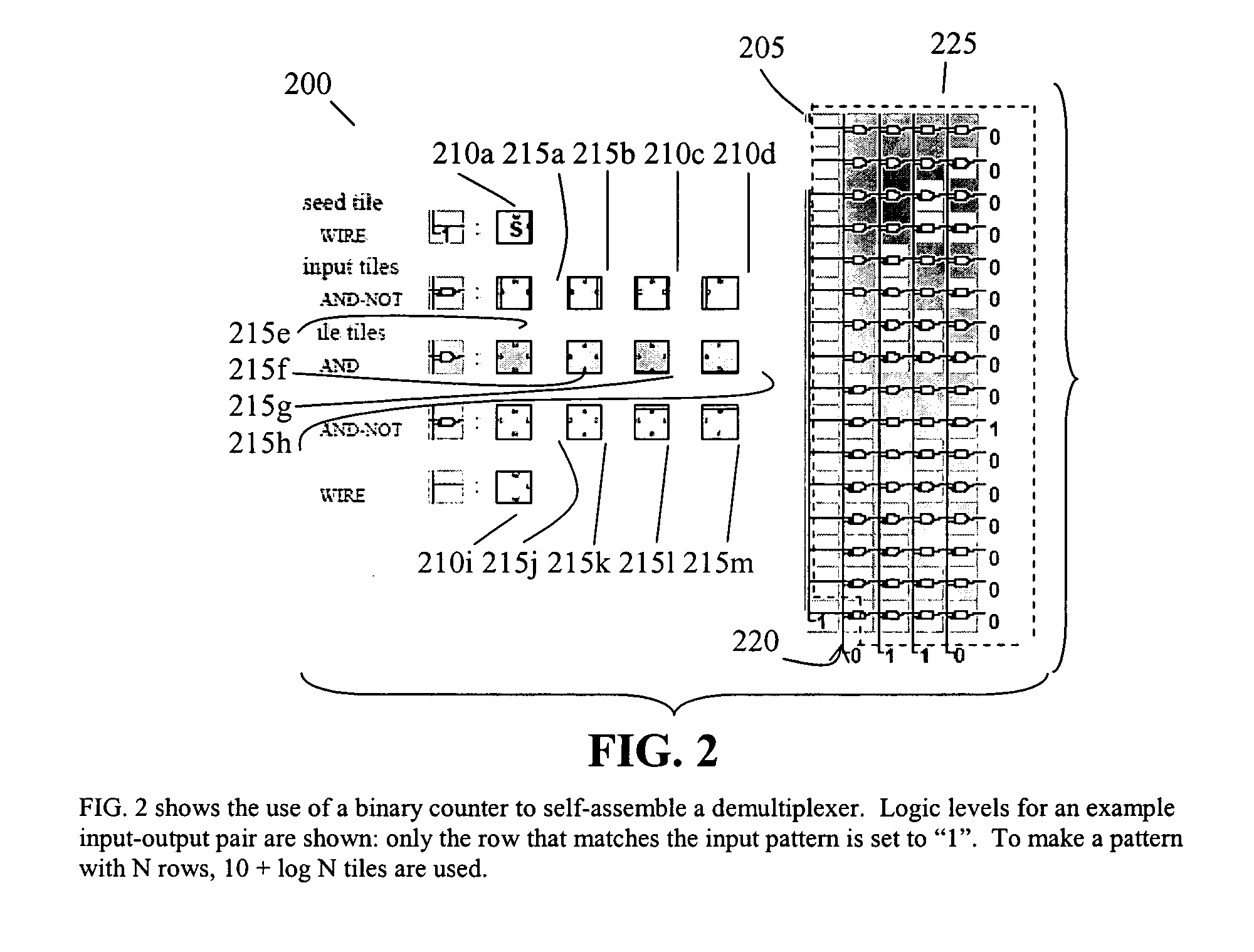Self-assembled circuits and circuit patterns
a technology of circuits and patterns, applied in the field of patterns and apparatus, can solve the problems of limiting the usefulness of small patterns that might be used for the further manufacture, affecting and limiting the usefulness of small patterns that might be used for the manufacture of small patterns, etc., to achieve the effect of facilitating the attraction and binding of tiles
- Summary
- Abstract
- Description
- Claims
- Application Information
AI Technical Summary
Benefits of technology
Problems solved by technology
Method used
Image
Examples
examples
[0069] To illustrate certain principles and operations of the present invention, we have theoretically studied certain aspects of the invention defined herein and described aspect of this theoretical work below. As will be appreciated, this theoretical work is merely exemplary and should not unduly limit the scope of the claims herein. One of ordinary skill in the art would recognize many variations, modifications, and alternatives. Also, the theoretical examples described herein are merely intended to assist the reading in understanding certain aspects of the invention without limiting the claims as recited herein.
[0070] To expand on the same basic concepts introduced above, it is noted that self-assembly is a process in which basic units aggregate under attractive forces to form larger compound structures. Recent theoretical work has shown that pseudo-crystalline self-assembly can be algorithmic, in the sense that complex logic can be programmed into the growth process. This theo...
PUM
| Property | Measurement | Unit |
|---|---|---|
| assembling molecular structures | aaaaa | aaaaa |
| attractive forces | aaaaa | aaaaa |
| forces | aaaaa | aaaaa |
Abstract
Description
Claims
Application Information
 Login to View More
Login to View More - R&D
- Intellectual Property
- Life Sciences
- Materials
- Tech Scout
- Unparalleled Data Quality
- Higher Quality Content
- 60% Fewer Hallucinations
Browse by: Latest US Patents, China's latest patents, Technical Efficacy Thesaurus, Application Domain, Technology Topic, Popular Technical Reports.
© 2025 PatSnap. All rights reserved.Legal|Privacy policy|Modern Slavery Act Transparency Statement|Sitemap|About US| Contact US: help@patsnap.com



